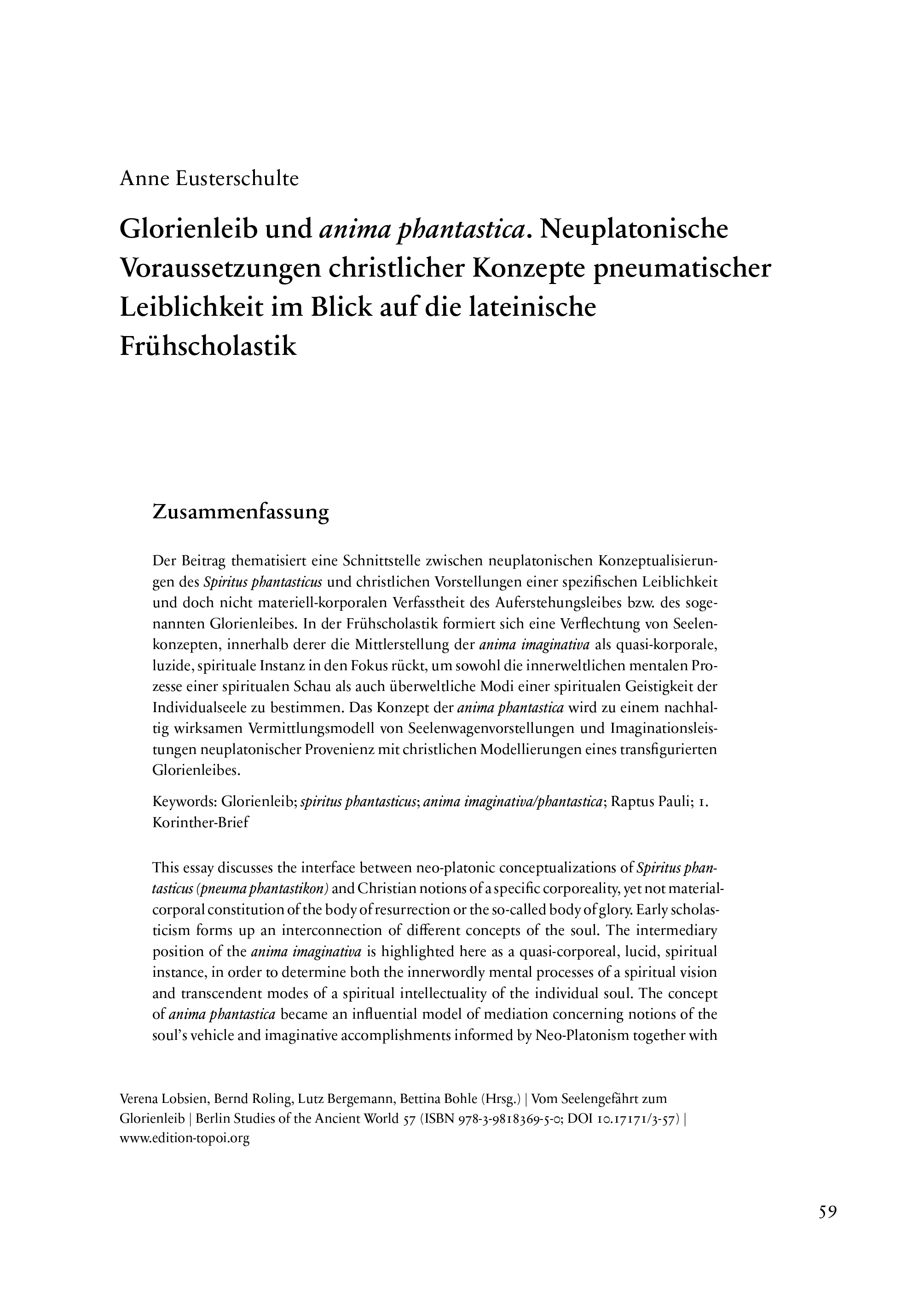Glorienleib und anima phantastica
Neuplatonische Voraussetzungen christlicher Konzepte pneumatischer Leiblichkeit im Blick auf die lateinische Frühscholastik
This essay discusses the interface between neo-platonic conceptualizations of Spiritus phantasticus (pneuma phantastikon) and Christian notions of a specific corporeality, yet not material corporal constitution of the body of resurrection or the so-called body of glory. Early scholasticism forms up an interconnection of different concepts of the soul. The intermediary position of the anima imaginativa is highlighted here as a quasi-corporeal, lucid, spiritual instance, in order to determine both the innerwordly mental processes of a spiritual vision and transcendent modes of a spiritual intellectuality of the individual soul. The concept of anima phantastica became an influential model of mediation concerning notions of thesoul’s vehicle and imaginative accomplishments informed by Neo-Platonism together with a Christian modelling of a transfigured body of glory.
Der Beitrag thematisiert eine Schnittstelle zwischen neuplatonischen Konzeptualisierungen des Spiritus phantasticus und christlichen Vorstellungen einer spezifischen Leiblichkeit und doch nicht materiell-korporalen Verfasstheit des Auferstehungsleibes bzw. des sogenannten Glorienleibes. In der Frühscholastik formiert sich eine Verflechtung von Seelenkonzepten, innerhalb derer die Mittlerstellung der anima imaginativa als quasi-korporale, luzide, spirituale Instanz in den Fokus rückt, um sowohl die innerweltlichen mentalen Prozesse einer spiritualen Schau als auch überwelt-liche Modi einer spiritualen Geistigkeit der Individualseele zu bestimmen. Das Konzept der anima phantastica wird zu einem nachhaltig wirksamen Vermittlungsmodell von Seelenwagenvorstellungen und Imaginationsleistungen neuplatonischer Provenienz mit christlichen Modellierungen eines transfigurierten Glorienleibes.

